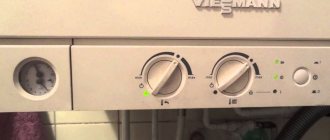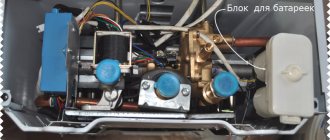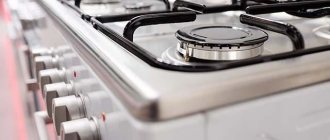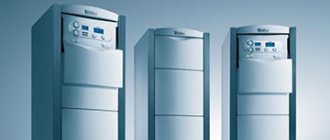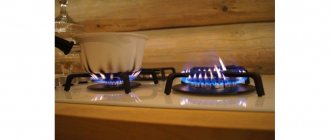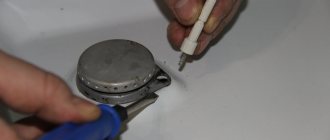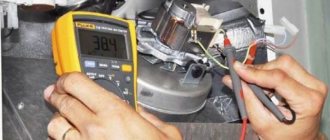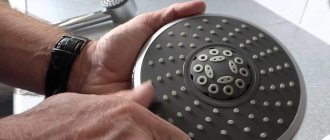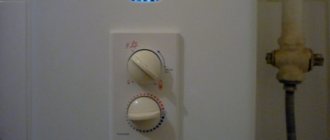A geyser is a flow-through water heater that runs on natural gas. If you do not have hot water supply, but gas is supplied, this equipment will increase the comfort of your life. You simply open the tap, hot water flows out of it, and its temperature is regulated by you yourself. Even if you have a centralized supply of hot water in your house or apartment, but you are not satisfied with the price you have to pay for heating, or perhaps you are not satisfied with the temperature, installing a gas water heater will also solve these problems. Heating water costs much less than it is provided centrally - this results in significant savings on utility bills. To understand which geyser is better, you will have to study the structure of the equipment and its types. Then the choice for you will be simple and conscious.
Which geyser is better depends on your requirements
The structure of the geyser
Instantaneous gas water heaters consist of three main components:
- gas burner device and gas removal system;
- heat exchanger;
- ignition and control module.
Structure of a water heating column with piezo ignition
All these units have several modifications and their layout gives different models with different characteristics. All this allows you to choose a unit to suit your own requirements, because you can only say which geyser is better by being tied to a specific situation.
Overpressure protection
Compliance with safety standards is one of the main components of the gas supply system. Exceeding pressure levels several times higher than the nominal value can create an emergency situation with any possible consequences. In order to prevent an accident, some models are equipped with an additional safety valve, which releases excess gas if the nominal values are exceeded by 2.5-3 times.
When organizing gasification based on a group cylinder installation, it is advisable to equip each unit with a similar device. For more information about the principle of operation and compliance with safety precautions in an autonomous gas supply system, read the article: autonomous gasification - gas cylinder installations.
This is how the reducer is connected in a cylinder installation
Type of ignition
For the dispenser to start working, you need to light the gas. Older models were lit manually by holding a burning match to the igniter. Today such units are no longer on sale; they are a thing of the past. They have been replaced by others that operate in automatic or semi-automatic mode.
Piezo ignition
In geysers with a piezoelectric element, ignition occurs in a semi-automatic mode. There are two burners - main and pilot. The pilot burner is a small wick that burns continuously, whether there is hot water flow or not. The main burner turns on only when the tap opens. The rest of the time it is turned off.
The procedure for starting a gas water heater with piezo ignition is simple: press the button located on the front panel, a spark appears on the candles, which ignites the pilot burner. When the hot water tap opens, gas is supplied to the main burner and ignition occurs from the pilot burner. While water is being consumed, both burners are lit. The valve was closed, the gas supply to the main one stopped, only the pilot one was on again.
Piezo ignition device for geysers - a simple and inexpensive device
What are the advantages of geysers with piezoelectric elements? These are the cheapest models and usually have a mechanical control - a regulator that allows you to change the height of the flame, thereby regulating the temperature of the hot water. These models are non-volatile, which can be important for a summer residence.
There are more shortcomings and they are more serious. The wick burns (should burn) constantly while you are using the column, and this is gas consumption. Even if it is small, but constant, as a result, quite a decent amount accumulates in a month. So this is far from the most economical way to heat water. The second disadvantage is also associated with the burning of the wick. If it goes out, you will not be able to light the column. The wick goes out because it does not have enough oxygen to burn, or because backdraft periodically occurs in the chimney, which blows out the flame. Since there is a flame controller, this is not a big deal - the gas shuts off automatically, but having to light the pilot burner again is unpleasant.
Electric ignition
Automatic geysers have electric ignition. This is an electric spark generator that is activated when the tap is opened. The rest of the time the gas is not lit, which significantly saves fuel. There is an electric ignition powered by batteries, and there is one from a 220 V network. Which gas water heater is better for this parameter must be chosen depending on the circumstances.
If your lights go out frequently, it makes sense to choose a battery-powered model. As you understand, in this case you have to make sure that they don’t “sit down.” If there are no problems with electricity or there is a backup power source, it is better to choose a gas water heater operating from a 220 V network. Plug the cord into the outlet once and forget about it. Electricity consumption is negligible, so they have almost no impact on bills.
The electric ignition is controlled by a microprocessor
Gas water heaters are electronically controlled. A board with a microprocessor is installed in the case; the desired temperature is set from a small control panel (push-button or touch). A small liquid crystal screen is often installed here, which displays the current state of the equipment, the temperature of the water, if it is being heated. This type of geyser is the best if you value ease of use.
Disadvantages - higher price and power requirements. Electronics need a stable voltage of 220 V with small deviations of the order of 2 * 3 V. We cannot maintain such parameters, so in order for an automatic gas water heater to work for a long time, a stabilizer is required, and it is better not a relay, but an electronic one. It not only stabilizes the voltage, but also evens out the shape of the pulses, which is also very important for imported water heaters.
HBO 3rd generation
The engine does not develop full power
— The gas filter is clogged; — Gas lines are clogged; — The gearbox is faulty; — The stepper gas supply regulator is faulty; — The lambda probe is faulty; — The system adjustment is broken (can be corrected by software).
Failure" when the throttle valve is opened sharply
— The throttle position sensor is faulty; — The system adjustment is broken; — The mixer is not selected correctly.
The engine does not switch to gas power after reaching the “transition” temperature designated by the software.
— The gearbox temperature sensor is faulty; — There is no engine speed signal (tachometer).
Popping sounds in the intake manifold when the throttle valve is opened sharply
— Leaning of the mixture due to incorrect adjustment of the system; — Leaning of the mixture due to incorrect operation of the stepper gas supply regulator; — “Air leakage” into the engine due to a leak in the intake tract; — The ignition system is faulty; — The engine gas distribution mechanism is faulty; — The adjustment of the thermal clearances of the timing valves is disrupted.
Increased gas consumption
— The air filter is clogged; — The ignition system is faulty; — The gearbox adjustment is broken; — Reduced engine compression; — The gearbox is faulty; — Poor heating of the gearbox with coolant; — The stepper gas supply regulator is faulty; — The lambda probe is faulty. — The adjustment of the lambda control system is broken.
Burner, combustion chamber, chimney
Heating of water in a gas water heater occurs due to the heat released during gas combustion. The combustion itself occurs in the burner, and it is “packed” into the combustion chamber. Unburnt gases that remain in the chamber are discharged through the chimney. Let's take a closer look at all these devices.
Burner - main unit
Burner
The heat source in the gas water heater is a gas burner. There are three types: single-stage, two-stage, modulated. The first two types are almost never seen lately - they do not allow maintaining a given temperature, so there is no point in considering them - all columns have a modulating burner.
This is what a gas burner for a water heater looks like when installed
Modulating burners can be controlled manually - with a special handle mounted on the body - or through a microprocessor that maintains a given water temperature. Burners are made mainly of galvanized steel, since this material is optimal for performing the assigned tasks. It is inexpensive, durable, has a high melting point, and can withstand frequent heating.
Types of combustion chamber and chimney
Combustion chambers in geysers are of two types - open and closed. Their name reflects the essence:
- closed (turbocharged, fan) is a metal box into which a burner is inserted with a socket at the top for installing a chimney;
- open (atmospheric) - this is actually the entire body of the column, since there is no isolated space, just a burner is installed in a certain place, on top there is a lid with a socket to which the chimney is connected.
Different types of combustion chambers require different chimneys. In an open chamber, air is taken from the room, therefore an effective ventilation system, normal air flow and an atmospheric chimney exiting into the ventilation duct are necessary. The closed chamber is equipped with a coaxial chimney (two pipes of different diameters inserted into one another), which is led through the wall to the street. In this case, combustion products are removed forcibly, using a fan, through the inner pipe, and oxygen flows directly to the burner through the outer pipe.
Open and closed combustion chambers at gas water heaters require the installation of a different type of chimney
A gas water heater with a closed combustion chamber operates more stably under normal conditions, but it has disadvantages. In winter, the chimney can become overgrown with frost, causing the heater to go out (it is extinguished by an automatic system that controls the removal of combustion products). The second point is that with a strong side wind, the air flow can blow out the flame. The gas supply is turned off by the same automatic system, but the situation is unpleasant. The third circumstance is that not all city authorities allow holes in the walls of houses and the insertion of pipes.
So in this case, it is difficult to say exactly which geyser is better - it depends on many factors.
Preparing for water unit repair
Often, after disassembling the frog to install a new membrane, you will find that in addition to it, it is necessary to replace one or more gaskets of different diameters. Therefore, you need to start repairs by purchasing in advance a complete repair kit for the water unit that matches the model of your gas water heater.
To carry out repairs or preventative maintenance, it is best to stock up on a repair kit, since when disassembling the water reducer, it may become clear that it is necessary to replace not only the membrane, but also several other parts
In addition to spare parts, you will need tools. For old type units: adjustable wrench, screwdrivers for straight and Phillips slotted screws. For modern Neva models and Chinese water heaters, you will need a screwdriver with a Ph2 bit, preferably magnetized. There are also devices with “tricky” fasteners. A remedy for solving the problem of soured screws, for example, WD-40, will not be superfluous.
You will also need two adjustable gas wrenches. They are necessary so that when dismantling and reinstalling while screwing on fittings (flexible hoses or fittings) they do not cause damage to the fittings of the unit.
If excessive force is applied to the fittings, microcracks or hidden cracks may form that are not visible from the outside. To prevent this from happening, hexagonal pads are made on the fittings, which are held against displacement by one of the keys. The second key is used to screw or unscrew the fittings.
Heat exchanger
Water is heated while it flows through the heat exchanger. It is a metal pipe installed above the burner. The shape of the heat exchanger in a gas water heater is special - a pipe with fins is laid in a snake at the bottom, then a sheet of metal is installed around it, on top of which the pipe is wound in a spiral. Water flowing through this long path is heated by the heated metal.
This is what a heat exchanger for a gas water heater looks like
Heat exchangers are made from galvanized steel (the most budget option), stainless steel and copper. The best in terms of efficient heat transfer are copper. They are the most economical, but also expensive. The most durable ones are stainless steel, but they are much worse at heat transfer. Which gas water heater is better in this case is up to you to decide. Choose the quality that is more important to you.
If you decide to buy a gas water heater with a copper heat exchanger, do not try to find a cheap model. In order to reduce the price, manufacturers use low-quality copper, and the tubes are also made with thin walls. Such a heat exchanger will serve the warranty period, and then problems will begin - a leak will appear.
If you remove the casing, you will see fistulas in the tubes through which water drips. They are located mostly on the outside of the pipe, exactly in the place where condensation forms. If the pipe is of normal thickness, this is not a problem, but it quickly corrodes thin walls. Such a heat exchanger with a leak does not need to be replaced (it costs about 1/3 of the total price), it can be soldered. You will need refractory solder with a melting point of about 200°C, a powerful soldering iron and soldering flux. The technology of work is usual - clean the damaged area to bare metal, degrease, tin, and solder.
About air jams
What to do if the gas reducer freezes for this reason?
If this mechanism freezes, it is necessary to carry out special prevention: dry the gas before it penetrates the reducer. Also, oxygen is preheated to 60-70 degrees.
Oxygen is dried this way: it is passed through an element that acts as a moisture absorber, for example, calcined vitriol. This is a drying component. It is placed in a dryer, which runs between the gas tank and the reducer. The ROK-1 apparatus is often used.
After this operation, the reducer hose is removed. The gearbox itself is purged. Moisture is removed from it.
If an air lock still occurs in the gas reducer, it means:
- All connections have weak sealing.
- A powerful funnel appeared when antifreeze was added or replaced. As a result, air does not leave the system. The reason for this is a strong stream of liquid. Because of it, the air does not escape. Therefore, it is better to fill it with a very weak stream.
- The air valve is not working properly. Thermal changes in the engine occur. And the air is concentrated in the cooling system.
- The fiber and seal in the pump do not work well. Because of them, air is pumped up.
- OS leaks in hoses and heating radiators. The volume of liquid decreases, and the air develops. The radiator core becomes clogged and the engine overheats.
- Head gaskets burn out. Antifreeze ends up in the crankcase of the power unit or exhaust mechanism. Its volume is decreasing. It boils due to the huge volume of air. In the first case, the OS level test will determine that it exceeds the maximum value. In the second, white smoke will follow from the chimney.
A logical question arises - how to remove the air lock in the gas reducer?
First you need to determine its cause.
How to determine power
First of all, you need to decide on the power or performance of the gas water heater. These are two interrelated characteristics that simply reflect different characteristics of the unit. Performance is how many liters of water a column can heat per minute, and power is how much heat it can release. Some manufacturers indicate power, others indicate performance, so you need to understand exactly what you need.
Let's first figure out what kind of performance you need from your geyser. This depends on the number of consumers who need to be provided with warm water. There are consumption standards for different types of equipment:
- kitchen sink, washbasin - 4 l/min;
- shower - 7-10 l/min.
The higher the power, the larger the size
If you have a kitchen sink, shower and washbasin connected to hot water, so that all three points work simultaneously and the water temperature does not drop, you need a capacity of 4 + 4 + 10 = 18 l/min. This is a lot, the price tag will be substantial. If you think about it, you will realize that all three devices are almost never turned on at the same time. There are situations when the shower and one of the taps work together. To provide them with hot water, the capacity must be 14 l/min. This is a little more modest, but quite enough for a comfortable stay. Look for the found value in the technical specifications; it should not be less.
Now let's look at power. Gas water heaters can allocate from 6 kW to 40 kW of heat for heating water. Here the division is:
- a gas water heater with a capacity of up to 19 kW is suitable for heating water for one water collection point;
- for two points the power should be from 20 kW to 28 kW;
- three require more than 29 kW.
Now, you can definitely say which geyser is better in terms of power in relation to your needs.
What else to look for when choosing
There are a few more lines in the technical characteristics of geysers that are worth paying attention to. First, look at the minimum water and gas pressure that this model can work with. Imported gas water heaters from European manufacturers are more capricious in this regard - they are designed for stable pressure and do not tolerate changes well. But under normal conditions they work stably and without breakdowns.
Some manufacturers, in order to adapt their equipment to our conditions, install gearboxes that compensate for surges. If the model you like does not have such a device, and your water and/or gas pressure fluctuates, you can install the reducer in front of the entrance to the dispenser. This device is simply placed into a pipe break; installation is standard. At the same time, your other consumers will be protected.
Operating parameters must be monitored
It is also useful to review the list of utility programs and protection levels. The safety and comfort of equipment operation depends on them. It is highly desirable to have the following functionality:
- Gas control. Monitors the presence of a flame on the burner; if it goes out, it shuts off the gas supply.
- Traction control. The presence of draft in the chimney is controlled. If combustion products are not removed, the gas supply is shut off.
- Flow control or hydraulic valve. Turns off the column if the water pressure is too weak or there is none at all.
- Overheat protection. The temperature sensor monitors the temperature of the water in the heat exchanger; when it approaches a critical point (boiling), it turns off the column. This extends the service life of the equipment (if it boils, the heat exchanger can rupture, as can the pipes).
These functions are necessary for the safe operation of the geyser. This is almost a standard set that is found in all good gas water heaters. All others are optional. They, as a rule, are no longer so critical (for example, the remote control).
Malfunctions
Qualified experts say that in 8 out of 10 cases of geyser breakdowns, the problem lies in the water unit. As a rule, this is contamination or deformation of the membrane in the assembly. Namely, the deposition of various clogs and salts occurs, as well as the formation of cracks in the housing, etc.
You should know that a damaged node cannot perform its functions fully. If the membrane is damaged, it cannot stretch enough to allow gas to pass through.
There are models of geysers whose membrane needs to be changed regularly. According to reviews, this is a device from the manufacturer Neva. In order to prevent breakdowns, from time to time you need to disassemble the gearbox in order to clean it. Then you can notice the deformation of the membrane in time. Filters in the water unit often become clogged.
The wear of the gearbox is explained by frequent switching on/off; this greatly affects the membrane in the unit, seals, etc. When the seal wears out, water begins to leak out of the gearbox.
We can conclude that the reducer for a gas water heater is an important part that needs to be maintained, which means it must be in such a position that there is constant access to it. Such maintenance of the gas water heater or, if necessary, repairs can be carried out independently, since these manipulations are not complicated. To replace or clean the gearbox you do not need to have special skills.
Rice. 4 Water unit for the column, the body of which is secured with 8 bolts
Geyser sizes and prices
The overall dimensions of gas water heaters are small - they are comparable to a small wall kitchen cabinet. The average height is 550-650 mm, width 300-400 mm, depth 200-300 mm. But if you wish, you can find models that are wide and flat, or vice versa, narrow and deep. Which geyser is better based on this parameter can only be determined by reference to the installation site, so there is no definite answer here either.
Colors may vary
Prices for geysers vary widely. Simple models with piezo ignition and a galvanized burner cost from $110. Equipment with electric ignition and a bunch of service functions - up to $450. So there is somewhere to roam.
| Name | Manufacturer country | Power | Performance | Max water temperature | Min water pressure | The combustion chamber | Burner | Body exchanger | Ignition | Dimensions (H*W*D) | Price |
| Neva 4511 (Neva) | Russia | 21 kW | 11 l/mm | 90°C | 0.3 bar | closed | electronic/batteries | 565*290*220 mm | 175$ | ||
| Electrolux GWH 265 ERN NanoPlus | Sweden/China | 20 kW | 10 l/min | open | copper | electronic/batteries | 665*390*245 mm | 110$ | |||
| Bosch W 10 KB | Germany/Portugal | 17.4 kW | 10 l/min | 0.15 bar | open | stainless steel | copper | electronic/batteries | 638*341*242 mm | 145$ | |
| Bosch WR 10 - 2P (GWH 10-2 CO P) | Germany/Portugal | 17.4 kW | 10 l/min | 60°C | 0.1 bar | open | stainless steel | piezo | 638*341*242 mm | 167$ | |
| WERT 10EG RED GLASS | Russia/China | 20 kW | 10 l/min | 0.2 bar | open | copper alloy | electronic/batteries | 550*330*188 mm | 92$ | ||
| Ariston FAST EVO 11 B | Italy/China | 19 k/W | 11 l/min | 65°C | open | copper | electronic/batteries | 640*370*240 mm | 164$ | ||
| Vaillant MAG OE 11-0/0XZ C | Germany | 19.2 kW | 11 l/min | 55°C | open | piezo | 177$ | ||||
| Bosch WR 13 - 2P (GWH 13-2 CO P) | Germany/Hungary | 22.6 kW | 13 l/min | 60°C | 0.1 atm | open | stainless steel | copper | piezo | 720*385*242 mm | 210$ |
| Neva Lux 6014 | Russia | 28 kW | 14 l/min | 0.1 bar | open | electronic | 650*350*240 mm | 210$ | |||
| Ariston FAST 14 CF E G20 | Italy/China | 24.3 kW | 13-14 l/min | 60°C | 0.2 bar | open | copper | piezo | 580*374*223 mm | 115$ |
There is no automatic traction control on the KGI-56 column.
Page 6 of 10 Malfunctions of the KGI-56 column 1. The main burner does not light up: - insufficient water pressure; - deformation or rupture of the membrane - replace the membrane; - the hole in the sub-membrane space is clogged - clean it; - the rod has come off the plate - replace the rod with the plate; - misalignment of the gas part in relation to the water part - align with three screws; - the rod does not move well in the oil seal - refill the oil seal and lubricate the rod. 2. When the water intake stops, the main burner does not go out: - the hole in the over-membrane space is clogged - clean it; — dirt has got under the safety valve - clean it; — the small spring has weakened — replace it; - the rod does not move well in the oil seal - refill the oil seal and lubricate the rod.
